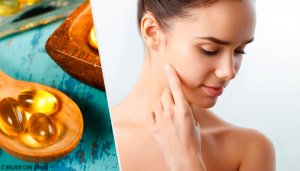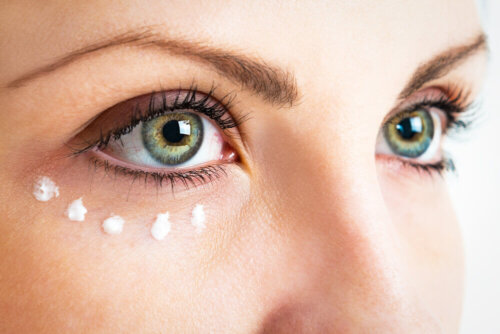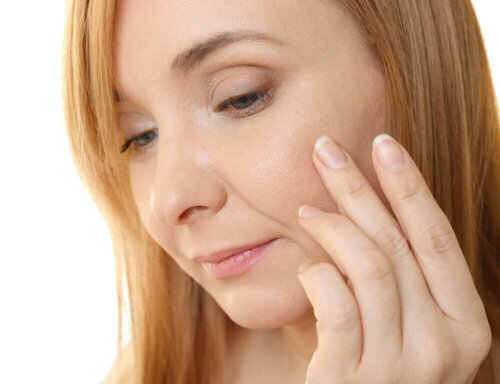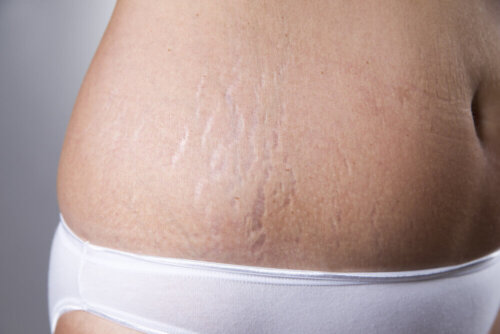5 Ways to Use Vitamin E Capsules for Skin Care


Reviewed and approved by the doctor Maricela Jiménez López
Vitamin E capsules are easy to find in almost any pharmacy or beauty supply store. Not only are they inexpensive, but they can be a great addition to your skincare regimen. You haven’t added it to your beauty routine yet?
You might’ve noticed that vitamin E is a key ingredient in a lot of cosmetics. Why? Because this vitamin is particularly for skin care. According to a study published in the Indian Dermatology Online Journal, vitamin E helps prevent dermatological illnesses, promotes healing, and prevents premature aging.
The most interesting thing is that, unlike other products, the topical application of vitamin E rarely produces side effects. In very rare cases, it can lead to contact dermatitis. Do you want to know more about using vitamin E capsules? Get your notepad!
Possible uses for vitamin E capsules
Before talking about how you can use vitamin E in your skincare regimen, it’s important to clarify one thing: if you have any symptoms of a skin condition (including acne), you must first see a doctor or dermatologist. While vitamin E can be good for your condition, it might not be the best for your particular case.
You also need to keep in mind that the effects of vitamin E aren’t immediate. Furthermore, it’s not a miracle cure-all ingredient. You’ll see the most benefits if you use it consistently over time, as part of your beauty routine. With that in mind, let’s look at how you can use a vitamin E capsule for skin care.
Read about Vitamin E: 6 Foods to Eat More of It
1. As a cream for the contour of your eyes

The skin around your eyes is delicate and can suffer the negative consequences of sun exposure. Applying vitamin E oil to the area can have some benefits.
According to information published in Free Radical Research Communications, vitamin E can help prevent damage caused by UV rays. It can also help inhibit the effects of oxidative stress.
Directions for use
- The texture of the contents of a vitamin E capsule might be too greasy and sticky for you. Thus, we recommend applying it little by little, massaging it in. This way, the grease you’ll completely absorb it comfortably.
- To ensure it works correctly and because of its texture, we recommend doing this procedure before bedtime.
2. As an anti-pigmentation lotion
Pigmentation is a fairly well-known term for many of us. In fact, there are cosmetic lines and beauty products made just for this characteristic.
Why not try to a vitamin E capsule if you have age spots, are pregnant, or have been exposed to the sun for too long.
Since it is rich in antioxidants, it promotes skin regeneration. In fact, studies show that vitamin E is somewhat effective against problems like melasma.
Directions for use
- Just take the contents of the capsule and apply them to the spots on your skin.
- Massage it in so that it absorbs into the skin as much as possible.
- Then, go to sleep and let it work overnight. The next morning, wash your face as you normally would.
3. Use a vitamin E capsule as an anti-aging cream

Using vitamin E on your skin isn’t going to miraculously prevent wrinkles. Nevertheless, due to the benefits it brings to the skin, it can help it stay young-looking for longer, especially when you add it to a healthy lifestyle and a good skincare routine.
Directions for use
- You can apply the oil to sensitive areas like the skin around your mouth and eyes, your neck, your forehead, etc.
- Use it every night before bed.
Read about 4 Vitamins that Help You Heal Your Lungs After Smoking
4. As a lip balm
Lip balm can help keep your lips hydrated and protected. While there are plenty of effective commercial lip balms, you can also use a little vitamin E oil to the same effect.
Thanks to vitamin E’s anti-inflammatory, antioxidant, and photoprotective properties, it can help with dryness and premature skin degeneration on your lips.
Directions for use
- Since the contents of the capsules might be too much for your lips, you can empty the oil into a small container and carry it with you.
- Apply a little bit of the oil every two hours instead of your normal lip balm.
- If you are already used to making your own lip balm, add this vitamin the next time that you make it. It is also perfect if you want to give your lips some color, in addition to making them look better.
5. Stretch mark cream

Few women are completely free of stretch marks. Changes in weight, pregnancy, lack of exercise and what we eat influences the appearance of these annoying marks.
Normally, stretch marks are found around the stomach, but they can also affect your arms, legs, and breasts. Do you want to make them less visible? Then you could use a vitamin E capsule. While you won’t get rid of them overnight, with consistent use you can see some good results.
Directions for use
- Apply the contents of the capsule to your skin and massage it in until it absorbs.
- Empty two or three capsules into your current anti-stretch mark cream. This option will take longer for you to see results, but if it is a good cream, you’ll obtain skincare benefits from it.
Conclusion about vitamin E capsules
Vitamin E capsules won’t work miracles, but as part of a regular beauty routine, they can help your skin look healthier. Of course, its use should always be part of a healthy lifestyle and a good, basic skincare routine. In addition to the applications mentioned above, try adding it to your favorite homemade mask to enhance its benefits.
For example, you can mix the oil from one capsule with oatmeal, cucumber or avocado; apply it to the skin and leave it on for 15 to 20 minutes. The result will be a fresher, more luminous complexion.
Of course, any of the options you choose to have a radiant skin, must be complemented with good lifestyle habits, a balanced diet, and basic skin care.
All cited sources were thoroughly reviewed by our team to ensure their quality, reliability, currency, and validity. The bibliography of this article was considered reliable and of academic or scientific accuracy.
- Babbush, K. M., Babbush, R. A., & Khachemoune, A. (2021). Treatment of melasma: a review of less commonly used antioxidants. International Journal of Dermatology, 60(2), 166-173. https://pubmed.ncbi.nlm.nih.gov/32815582/
- Berardesca, E., & Cameli, N. (2021). Vitamin E supplementation in inflammatory skin diseases. Dermatologic Therapy, 34(6), 15160. https://pubmed.ncbi.nlm.nih.gov/34655146/
- Ekanayake-Mudiyanselage, S., & Thiele, J. (2006). Sebaceous glands as transporters of vitamin E. Der Hautarzt; Zeitschrift fur Dermatologie, Venerologie, und verwandte Gebiete, 57(4), 291-296. https://pubmed.ncbi.nlm.nih.gov/16477469/
- Harvard T.H. Chan School of Public Healt. (marzo de 2023). Vitamin E. https://www.hsph.harvard.edu/nutritionsource/vitamin-e/
- Keen, M. A., & Hassan, I. (2016). Vitamin E in dermatology. Indian Dermatology Online Journal, 7(4), 311-315. https://journals.lww.com/idoj/fulltext/2016/07040/vitamin_e_in_dermatology.18.aspx
- Medina, J. & Gupta, V. (8 de mayo de 2023). Vitamin E. StatPearls Publishing. https://www.ncbi.nlm.nih.gov/books/NBK557737/
- Michalak, M., Pierzak, M., Kręcisz, B., & Suliga, E. (2021). Bioactive Compounds for Skin Health: A Review. Nutrients, 13(1), 1-31. https://www.ncbi.nlm.nih.gov/pmc/articles/PMC7827176/
- Michels, A. J. (febrero 2012). Vitamin E and Skin Health. https://lpi.oregonstate.edu/mic/health-disease/skin-health/vitamin-E
- Mocchegiani, E., Costarelli, L., Giacconi, R., Malavolta, M., Basso, A., Piacenza, F., Ostan, R., Cevenini, E., Gonos, E. S., Franceschi, C., & Monti, D. (2014). Vitamin E–gene interactions in aging and inflammatory age-related diseases: Implications for treatment. A systematic review. Ageing Research Reviews, 14, 81-101. https://www.sciencedirect.com/science/article/abs/pii/S1568163714000026
- National Institutes of Health. (26 de marzo de 2021). Vitamin E. https://ods.od.nih.gov/factsheets/VitaminE-HealthProfessional/
This text is provided for informational purposes only and does not replace consultation with a professional. If in doubt, consult your specialist.








